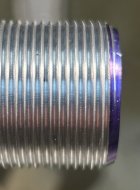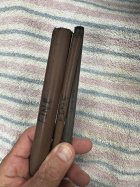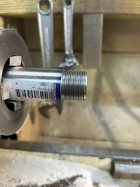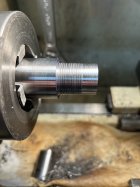I’m just a hobby machinist, but have spent way too much time troubleshooting large swing, light weight lathes, and only read this thread once so forgive me if I missed something important. I‘ve had two old, lightly used lathes - seldom used because they had never cut correctly and so many things were partially to blame it was more economical to pass them off to the next guy.
It helped me to think of the whole machine as being rubber - everything flexes, every part between how it’s held and the cutter is working against you. Avoid incremental mental creep - allowing a little extra flex here and a little there…a jaw or spider bolt tightened a little light, a gib slightly loose, tool stick out a little far, material stick out a little too much, not moving the tailstock quite as close as it should, etc.
Every place two metal surfaces come together should be suspect and checked for flatness. Regular use of precision stones to highlight and eliminate burrs on every flat surface is often thought of as standard practice. A properly leveled machine cuts better - a sensitive machinist level doesn't have to be expensive. Know what your spindle preload should be and what it is.
Every dovetail and gib should be checked for good contact and even wear. There are acceptable times gibs can be adjusted tighter than normal and later loosened for general machining. If your compound is worn out try locking it up tight and threading without it, or replace it with a solid block. Keep the cutting tool as close to the cross slide dovetails as possible - avoid big cantilevers. Mounting a long boring bar and measuring deflection of all the parts between the bed and tool shows the week links in the chain - it’s all rubber.
In lathes that aren‘t blessed with stiff spindles and the best spindle bearings, every fraction of an inch away from the spindle greatly increases chatter.
Using a center is a really good idea as long as it’s a quality center with good rigidity and the tailstock is actually centered and rigid. Experiment with different amounts of pressure - it’s very subjective so what’s described as light or heavy pressure means different things to different people. I‘d think the center isn’t doing much unless it’s somewhat tight, but keep in mind it is also adding to preload to the spindle bearings so once the threads are started you don’t want to fiddle with it.
Once chatter has started on a thread, even a proper change in technique that would have prevented it, may not clean up the chatter that’s already there.
It‘s funny that thousands of dollars in replacement parts and measuring equipment, a couple thousand hours of head scratching and rebuilding could be summarized in one short page.

Glad to see you’re headed in the right direction.














